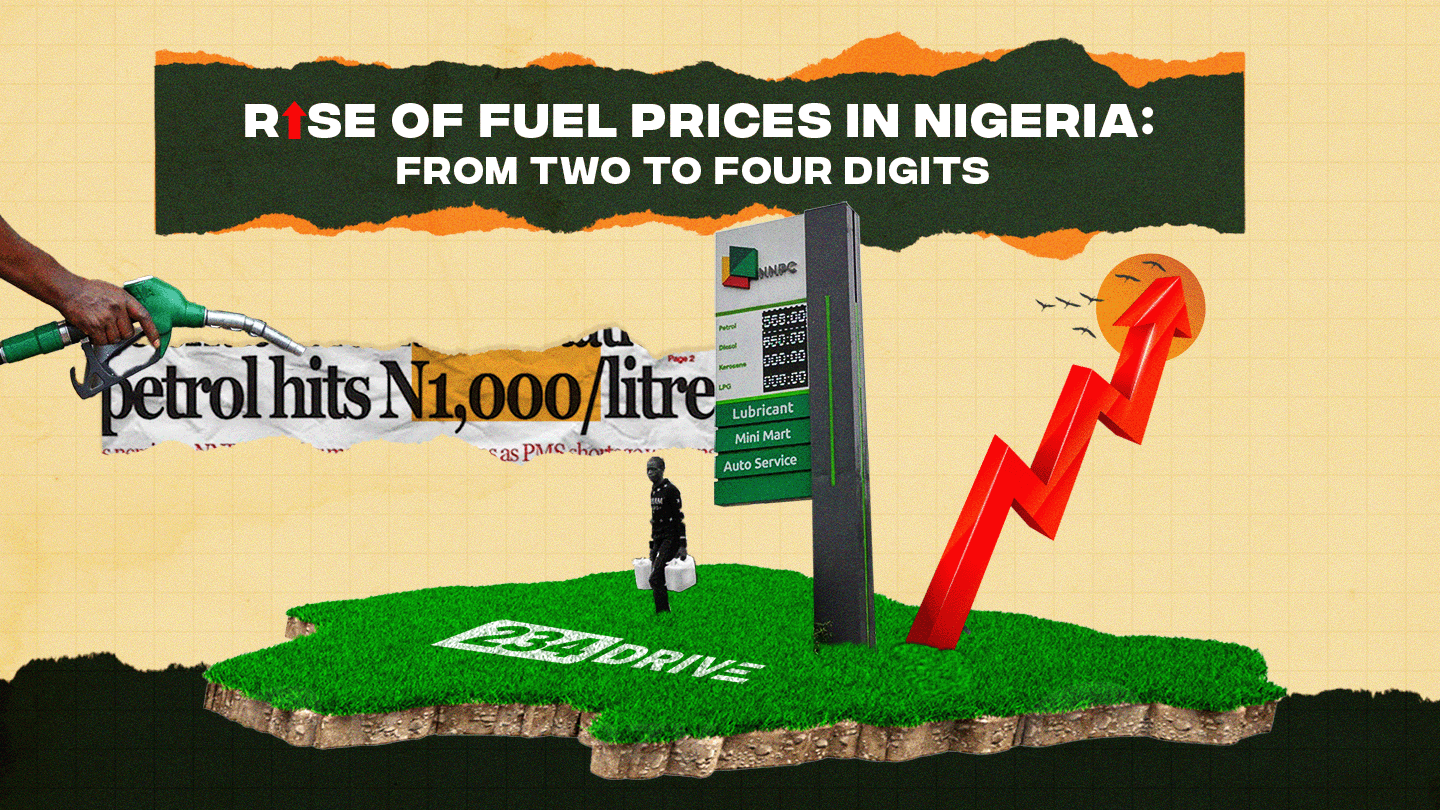From Two to Four Digits
A recent tweet caught my attention, stating: “So filling stations made price signboards with only space for three digits, because they never expected fuel to enter the four-digit zone in their lifetime.” Whenever I consider the current fuel prices, I am reminded of the good old days.
Back then, I would take joyrides, and on my way home, I would purchase one-thousand-naira worth of fuel to cover my tracks, ensuring my parents wouldn’t notice that the car had been driven. I suspect many of us can relate to this cheeky act. Fast forward a few years, and that same one thousand naira no longer buys even a litre of fuel. One might wonder, where did it all go wrong?
Many attribute the current fuel prices to the removal of the fuel subsidy, but fuel prices have been rising almost exponentially since 1985. This trend, delayed by subsidies enacted during the Olusegun Obasanjo administration, was a ticking time bomb now coming to fruition. To fully understand what is going on now, there is a need to jump into our DeLorean and go back in time.
Once Upon a Time….
In 1985, Nigeria experienced significant political upheaval with the Babangida coup. The following year marked a turning point: the naira doubled in value against the dollar, and fuel prices followed suit, rising from 20 kobo to 39.5 kobo per litre. Prior to this, fuel prices had been stable, gradually increasing over a nine-year span from 6 kobo in 1973.
By 1993, the price for a litre of fuel jumped to 5 naira, and complaints echoed throughout the country. Little did they know that the one-thousand-naira mark was only a few decades away from being shattered. Another pivotal moment came in 2007 under President Umaru Musa Yar’Adua, when fuel prices decreased from 75 naira to 65 naira per litre, temporarily providing relief to car owners.
However, the peace was short-lived. In 2012, fuel prices surpassed the 100 naira mark, escalating from 65 naira to 141 naira, prompting widespread outrage. After a few years, fuel prices soared again in 2016, reaching 145 naira per litre under President Buhari. By the end of his tenure, prices had escalated to 195 naira.
Present Day…
In 2023, President Ahmed Tinubu assumed office. His welcome package; the removal of the fuel subsidy. This led to increase in fuel prices literally every week, eventually breaking the 1,000-naira mark. Currently, prices range between 1,150 naira and 1,300 naira per litre, with little hope for a decrease.
For context, let’s examine fuel prices in a few West African countries alongside their minimum wages:
Ghana: 1 dollar (1,617 naira) with a minimum wage of 45,000 naira
The Gambia: 1.18 dollars (1,909 naira) with a minimum wage of 45,000 naira.
Benin Republic: 1.13 dollars (1,828 naira) with a minimum wage of 140,000 naira.
In Nigeria, the average price of fuel is 1,150 naira per litre, while the minimum wage is only 30,000 naira. This means that an average Nigerian’s salary can purchase approximately 26 litres of fuel in a month—barely enough to fill the tank of most vehicles. Yes, the minimum wage has been increased to 70,000 naira, but who has received that alert? Not me.
As fuel prices rise, so does the cost of living. Public transport fares have tripled this year, placing additional financial strain on Nigerians. The economy’s heavy reliance on oil means that rising fuel prices affect everything, even down to basic street food like roasted corn.
Fuel prices in Nigeria are at an all-time high and show no signs of decreasing. As prices continue to rise, the cost of living remains a pressing concern for many. It’s crucial for policymakers to explore viable solutions that can ease the burden on citizens. While some might suggest alternatives like compressed natural gas (CNG) or electric vehicles, these options remain out of reach for most Nigerians
For now, we sit back and watch the race between fuel prices and the dollar rate. Who do you think is winning? Place your bets now!











1 comment
😪😪😪😪at this rate, fuel price is running faster. Let’s hope it doesn’t catch up and overtake dollar rate.